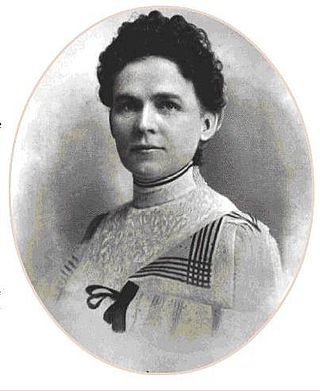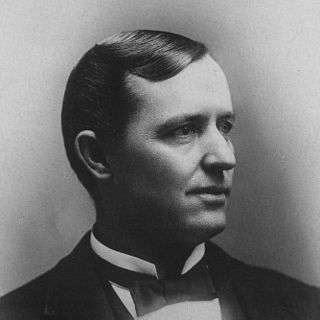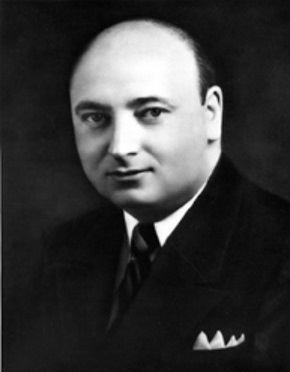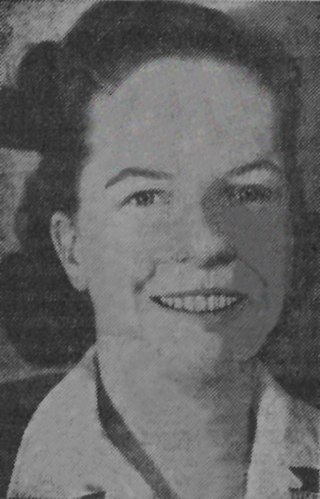
Fannie L. Forbis Russel (November 18, 1846 - 1934) was one of the pioneer women of the state of Montana.

Fannie L. Forbis Russel (November 18, 1846 - 1934) was one of the pioneer women of the state of Montana.
Fannie L. Forbis was born in Platte County, Missouri, on November 18, 1846, the daughter of J. F. Forbis. She was sister of John F. and James Forbis, prominent Butte mining attorneys. [1] [2]
Fannie Forbis Russel was one of the pioneer women of the state of Montana, she crossed the plains from Missouri to Montana with her first husband, David LeRoy Irvine. They travelled by ox team in the spring of 1864 and settled in Deer Lodge, Montana. The following year they moved to Virginia City, Montana, at the time an hustling mining camp. [1] [2]
Deeply religious, Russel was always interested in civic, church and club problems; she was active in organizing and building the local Butte Woman's Club. She was also prominent in the Homer Club for many years. [1] [2]
She was a member of the Daughters of the American Revolution and Literary Club. [1]
Fannie Forbis Russel moved to Montana in 1864. She first married David LeRoy Irvine. They lived in Virginia City for several years, and then moved back to Deer Lodge, the first city where they settled in Montana back in 1864. Irvine practiced law and died in 1872. On July 27, 1875, at Helena, Montana, she secondly married Reverend James Richard Russel (1847-1928), the first Presbyterian minister in Montana. They moved to Butte in 1879 and lived at 849 West Gueste St. (later Quartz Street), Butte, Montana. Reverend Russel founded the churches in Missoula, Butte, Deer Lodge and Helena. They had five daughters: Lialah Russel, Ebia Russel, Theo Russel, Charlotte Hough Russel, France Russel. [1] [2]
Since 1924 Charlotte Hough Russel was the librarian at the Montana State University Law School for 26 years until her retirement in 1950. Law students called her "chief". Before that she was the registrar and librarian at the Montana School of Mines in Butte. She died on July 8, 1957. [3]
Theo Russel, Butte school teacher for 40 years, died on August 8, 1955. She was born in Butte on June 10, 1880. [4]
Fannie Forbis Russel died on July 16, 1934, and is buried with her husband at Mount Moriah Cemetery, Butte. [2]

Deer Lodge County is a county in the U.S. state of Montana. As of the 2020 census, the population was 9,421. It forms a consolidated city-county government with its county seat of Anaconda. The county was established in 1865.

Deer Lodge is a city in and the county seat of Powell County, Montana, United States. The population was 2,938 at the 2020 census.

The Montana Department of Corrections is a state agency of Montana that operates state prisons and manages community-corrections programs. The agency has its headquarters in Helena.

Anaconda, county seat of Deer Lodge County, which has a consolidated city-county government, is located in southwestern Montana, United States. Located at the foot of the Anaconda Range, the Continental Divide passes within 8 mi (13 km) south of the community. As of the 2020 census the population of the consolidated city-county was 9,421, and the US Census Bureaus's 2015-2019 American Community Survey showed a median household income of $41,820. Anaconda had earlier peaks of population in 1930 and 1980, based on the mining industry. As a consolidated city-county area, it ranks as the ninth most populous city in Montana, but as only a city is far smaller. Central Anaconda is 5,335 ft (1,626 m) above sea level, and is surrounded by the communities of Opportunity and West Valley.

Jean Parker was an American film and stage actress. A native of Montana, indigent during the Great Depression, she was adopted by a family in Pasadena, California, at age ten. She initially aspired to be an illustrator and artist, but was discovered at age 17 by Metro-Goldwyn-Mayer executive Louis B. Mayer after a photograph of her was published in a Los Angeles newspaper when she won a poster contest.

Thomas Henry Carter was an American politician, who served as territorial delegate, a United States representative, and a U.S. Senator from Montana. Carter was born in Junior Furnace, Ohio, on October 30, 1854. Born to an Irish immigrant family, he spent most of his childhood in on small farms in the Midwest. In 1882, he moved to Helena, Montana to begin his law career there. He entered then politics, and was elected Montana's territorial delegate in 1888. Following Montana's admission into the union as a state, Carter represented the state in U.S. House of Representatives. He ran for re-election in 1890, but was narrowly defeated by Democrat William W. Dixon in the general election.

Ella Knowles Haskell was an American lawyer, suffragist, and politician. Born in New Hampshire, she moved to Montana to improve her health following a bout of tuberculosis and there became the first woman to be licensed as a lawyer, the first female notary public, the first woman to run for Montana State Attorney General, and the 26th woman to be admitted to practice before the US Supreme Court. She served as the President of the Montana Equal Suffrage Association and was widely known in Montana for her advancement of the suffrage movement, political feminism and social equity.

Lee Mantle was an American businessman and politician from Montana. A Republican, he was most notable for his service as a United States Senator from 1895 to 1899.

Jerry Joseph O'Connell was an American attorney and politician. He is most notable for his service as a member of the United States House of Representatives from Montana.

William Wirt Dixon was a U.S. Representative from Montana.

William Horace Clagett was a nineteenth-century politician and lawyer from various places in the United States. He was the uncle of Samuel B. Pettengill.

Hiram Knowles was a United States district judge of the United States District Court for the District of Montana.

Milan "Sheriff" Lazetich was an American football player in the 1940s. He played college football for the University of Montana and University of Michigan. He was a first-team All-Big Ten tackle and second-team All-American in 1944 for the Michigan Wolverines. He later played professional football for the Cleveland / Los Angeles Rams. He played on the 1945 NFL Championship team as a rookie and was an All-Pro guard/linebacker for the Rams in 1948 and 1949.

Granville Stuart was an American pioneer, gold prospector, businessman, civic leader, vigilante, author, cattleman and diplomat who played a prominent role in the early history of Montana Territory and the state of Montana. Widely known as "Mr. Montana", Granville's life spanned the formative years of Montana from territorial times through the first 30 years of statehood. His journals and writings have provided Montana and western historians unique insights into life in the Northern Rocky Mountains and Great Plains during the second half the 19th century.

The Society of Montana Pioneers was founded on September 11, 1884, in Helena, Montana, to honor and document the histories of Montana pioneers who were resident in the territory at the time it became a Montana Territory, May 26, 1864. In 1909, the society changed its membership rules to admit pioneers who were resident the territory prior to December 31, 1868. In 1899, the society boasted 1536 active members out of a one time total of 1808. The society did not consider individuals who were assigned to Montana on military duties, individuals who were deemed outlaws such as Henry Plummer of Bannack, or Indians as eligible for membership in the society.

The 2000 Montana gubernatorial election took place on November 7, 2000. Incumbent Governor of Montana Marc Racicot, who was first elected in 1992 and was re-elected in 1996, was unable to seek re-election due to term limits. Judy Martz, the Lieutenant Governor of Montana under Racicot for four years, won the Republican primary and advanced to the general election, where she faced Mark O'Keefe, the Montana State Auditor and Democratic nominee. Despite the fact that George W. Bush, the Republican nominee for president in 2000, won the state in a landslide, the race between Martz and O'Keefe was close. However, Martz managed to narrowly defeat him to win her first and only term as governor. This was the last time that a Republican was elected Governor of Montana until 2020, when Greg Gianforte was elected.

Verona Burkhard (1910–2004) was an American artist, known for her murals painted for the U.S. Treasury Department. She participated in four public projects including three United States post office murals and five murals completed for the Immigration and Naturalization Service. She has works in the permanent collections of the Smithsonian American Art Museum and the Western Colorado Center for the Arts. As of 2015, her murals completed for the post offices of Powell, Wyoming; Deer Lodge, Montana; and Kings Mountain, North Carolina are still hanging in the buildings which were the original post offices. In addition to her public artworks, Burkhard received the 1943 Alger Award from the National Association of Women Artists and was one of the first honorees of the "Colorado Women of Achievement" program in 1966.
Maria Montana was an American opera singer often called either a coloratura or lyric soprano who had training in the Toronto Conservatory of Music and the American Conservancy of Music in Fontainebleau, France. She performed a few years in France and Italy in the earlier 1920s where she picked up the stage name, and then began a prolonged career touring in America soon with the National Music League, the New York Philharmonic Orchestra, broadcasts on the NBC Radio Network, and other orchestras across the United States, often returning to Montana, before semi-retiring in Minneapolis, Minnesota, in 1940. By then she regularly used her stage name as her everyday name and became visible associating with the Baháʼí Faith by 1942. While occasionally performing, she also took part in various projects including meetings for the religion's teachings on the oneness of humanity, was elected as a Minnesota state delegate to the national Baháʼí convention for 1945, voted by mail, at which Helen Elsie Austin was elected as one of the nine members of the National Spiritual Assembly of the Baháʼí Faith in the United States. Shoghi Effendi, then the international head of the religion, rolled out plans including goals for the religion in Latin America and Europe. In a few years, after losing her uncle for whom she was a care-giver, and with a renewal of the plans of the international development of Baháʼí communities, she embarked on pioneering for the religion in Europe, mostly Italy, from the late 1950s. While there she sang for the opening of the German Baháʼí House of Worship. She returned to America in the mid-1960s and lived outside of San Diego, California. All along she had maintained private lessons, occasionally sang, and took part in operatic societies and events. She died in a car accident on March 16, 1971.

Frances Wheeler Sayler was an American civil rights and labor activist. She worked in the La Follette Committee and for the United States Women's Bureau, before became an organizer in the United Electrical, Radio and Machine Workers of America union. She was active in the early civil rights movement, fighting to desegregate facilities and abolish the poll tax.

Margaret Jane Steele Rozsa was an American government official in Butte, Montana who became the first female prohibition investigator for the United States in 1921. A longtime suffragist and women's rights advocate, she was also active in the women's club movement, serving as a member of the Good Government Club, Housewives League, Liberal Culture Club, and the Methodist Women's Missionary Society.